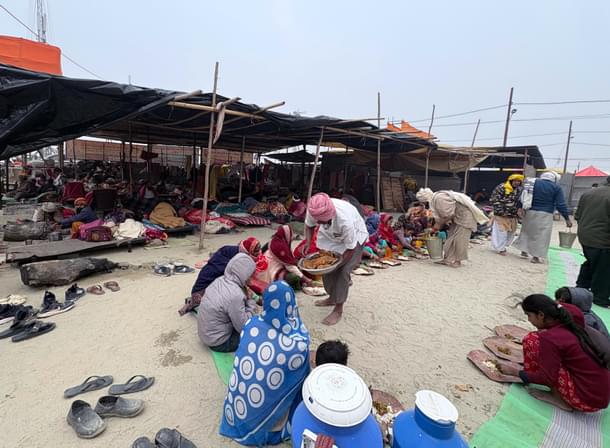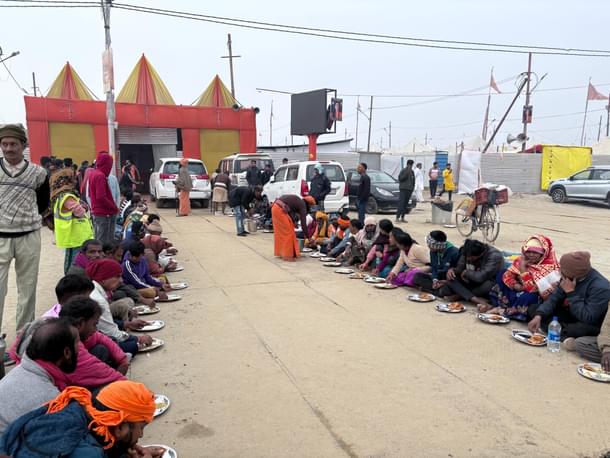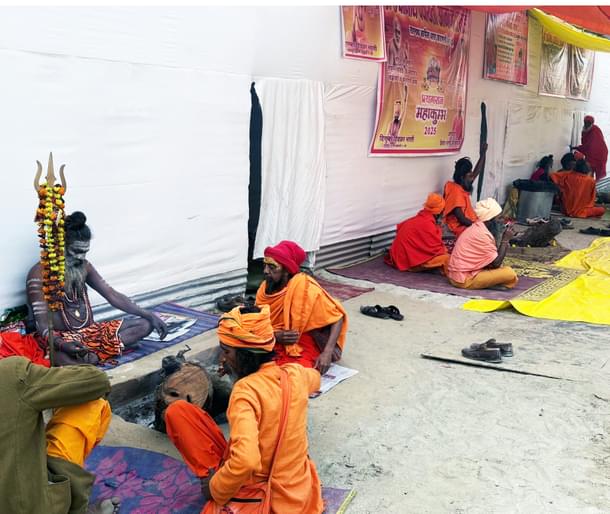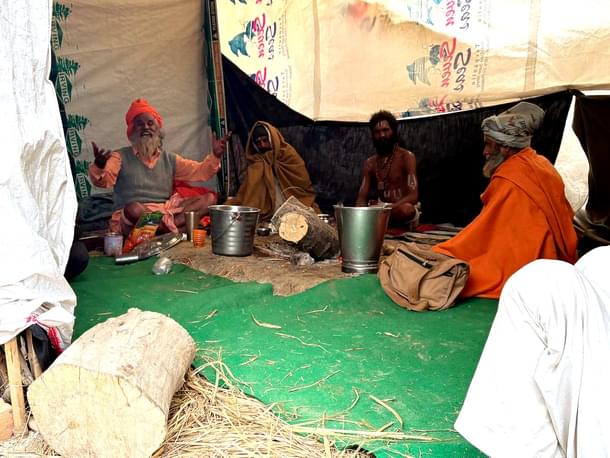Culture
Maha Kumbh 2025 In Pictures: Here's Your Route To The Sangam Ghat And Everything Along The Way
Ankit Saxena
Jan 16, 2025, 05:43 PM | Updated Feb 01, 2025, 02:29 PM IST
Save & read from anywhere!
Bookmark stories for easy access on any device or the Swarajya app.
Considered the largest spiritual gathering on Earth, the Maha Kumbh 2025 began on 13 January in the city of Prayagraj, Uttar Pradesh.
This once-in-144-year event, steeped in centuries-old traditions, will continue until 26 February, drawing nearly 40 crore devotees and pilgrims from around the world.
The second day, the occasion of Makar Sankranti (14 January), marked the first Shahi Snan of the festival.
Lakhs of saints and devotees gathered to seek blessings and purification through the sacred ritual of the holy dip on the banks of the Triveni Sangam — the confluence of the Ganga, Yamuna, and Saraswati rivers.
According to mela authorities, the first two days alone were expected to witness over two crore pilgrims, with numbers only set to rise during the subsequent Shahi Snan.
For this maha congregation, a temporary city has been built across 4,000 hectares. Divided into 25 sectors, with the Ganga and Yamuna rivers flowing between them, the city has been in the making over the past two months, following nearly two years of planning and preparations.
To help visualise its scale, the makeshift city is approximately 1.5 times the size of historically planned Lutyens’ Delhi, or a third of Chandigarh city, or nearly double the size of Delhi’s Indira Gandhi International Airport.
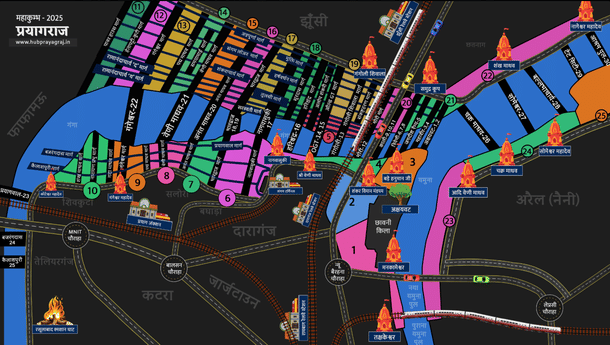
With a history marked by tales of devotees getting lost in the vast crowds, crowd management and smooth circulation remain central to the success of this festival.
This time again, a network of ghats has been developed along the Ganga and Yamuna rivers for the sacred bathing ritual. Multiple entrances and connecting pathways are planned for easy circulation to various ghats.
All these routes also converge towards the Triveni Sangam ghat, where both the floating crowds and the saints residing in the akharas and ashrams come together for the sacred experience.
The 2025 Mahakumbh Journey
Here, we aim to capture the essence and scale of the Mahakumbh Mela — by following one of the key pilgrim routes leading to the Sangam ghat, to present the journey from the entrance to the holy Snan.
Access by vehicle and other modes of transport remains restricted, particularly on the Shahi Snan days. Pilgrims are required to travel mostly on foot, covering distances of 6 to 7 kilometres (km) on their way to the ghats.
For daily visitors, a key entry begins from the Parade Ground junction in Prayagraj city, beyond which vehicle entry remains restricted.
Starting from there on foot at 9:30 am, the route, known as Kali Road, led me and other pilgrims to enter the mela through sectors 1 and 2.
This pathway also branches off along the route, leading to multiple routes that guide pilgrims either towards the Sangam ghat or to other ghats on the other side, in sectors 6 and 7.
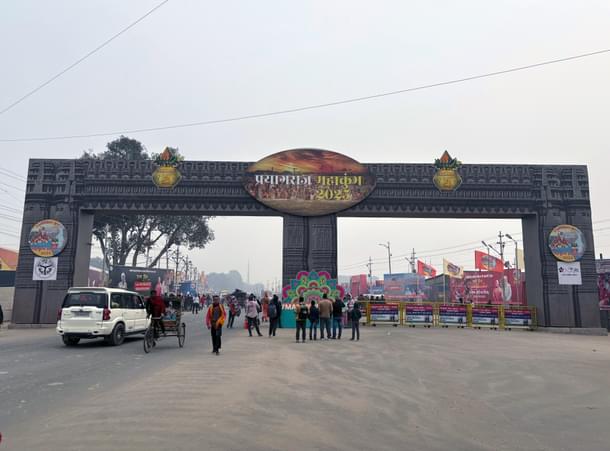
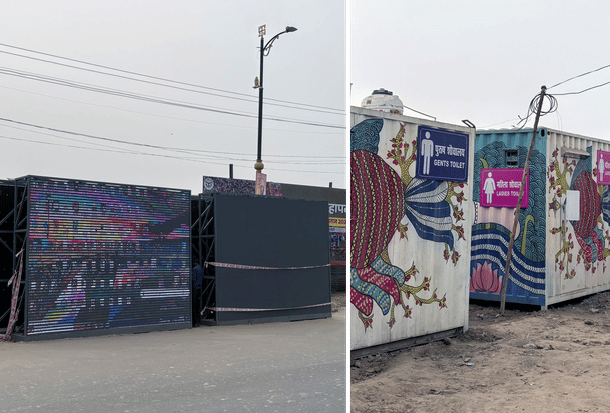
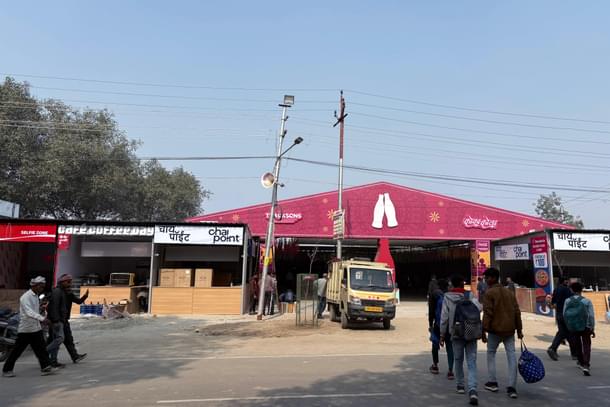
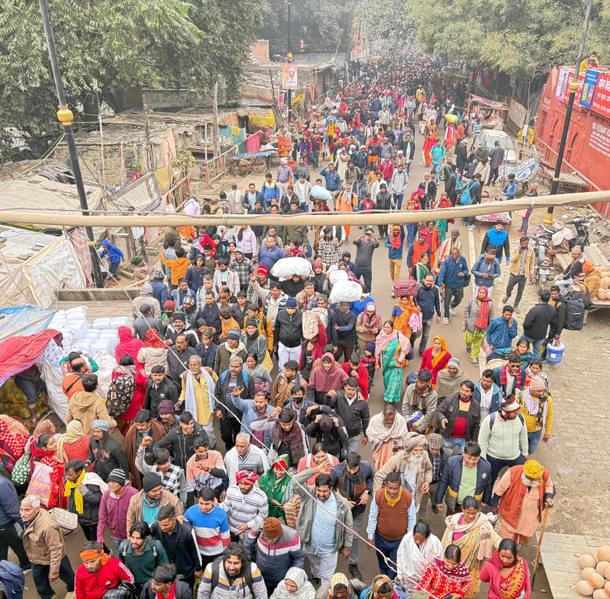
According to the mela authorities, minimal activities have been planned along this pathway to prevent blockages and ensure smooth movement for the pilgrims.
The primary focus is to provide an uninterrupted journey, allowing the pilgrims to proceed without delays.
The pathway along Kali Road leads to a parking lot to the right, for use on days when vehicles are permitted to enter up to this point.
However, most pilgrims continue their journey on foot, as the road begins to slope upwards.
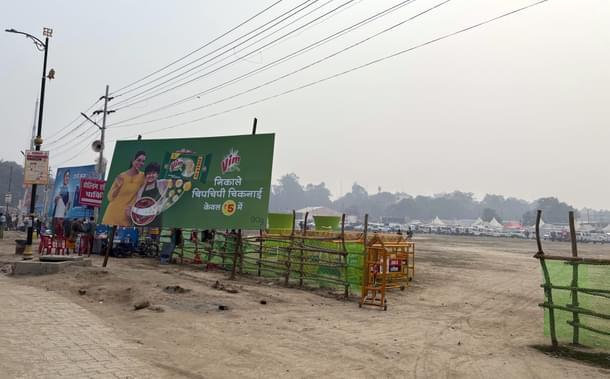
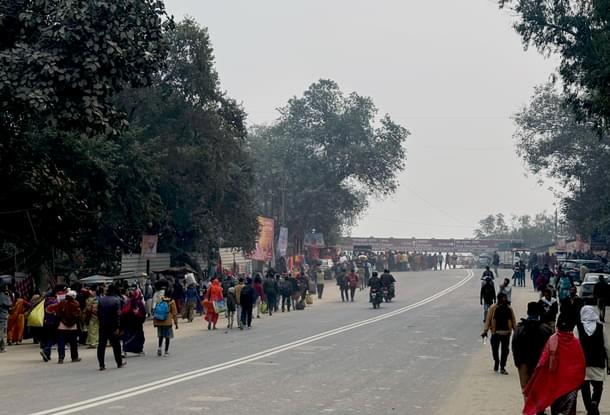
Signboards along the way help guide the pilgrims, showing the path to the Sangam ghat, as well as the ghat at the Nagvasuki temple.
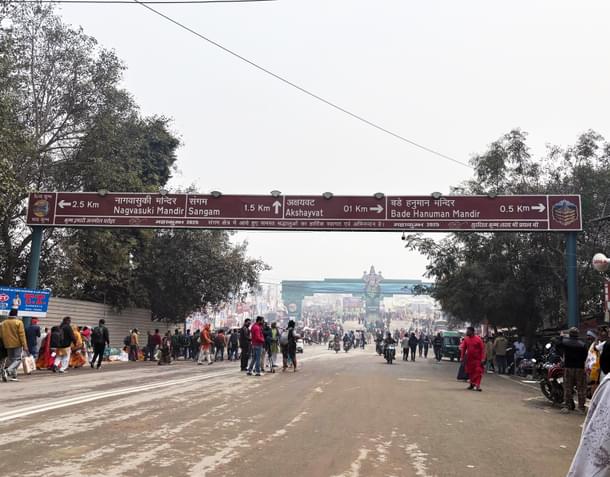
For those arriving by vehicle, the walk from the parking area to the Nagvasuki ghat is approximately 1 km.
Meanwhile, for those heading to the Sangam ghat, the journey continues on as they approach the second grand entrance — the Kachhap Dwar.
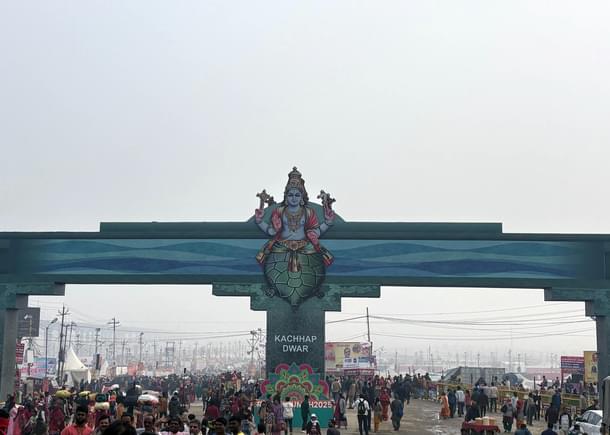
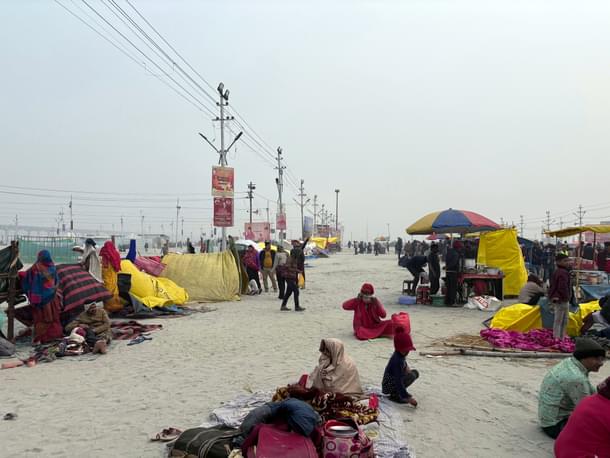
With time, as the mela arrangements have advanced, the traditional and cultural essence of the mela is still preserved through the small shops and stalls that line the pathways, offering local items, ornaments, religious articles, and more.
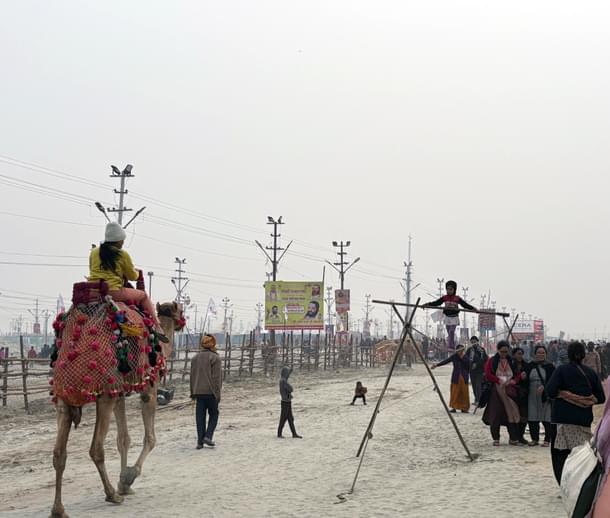
Various activities, like camel rides and performances by ropewalkers, entertain the pilgrims along the way.
From the other sectors, similar passageways and pontoon bridges over the Ganga converge on to this path, leading pilgrims to another grand entrance — the Nandi Dwar.
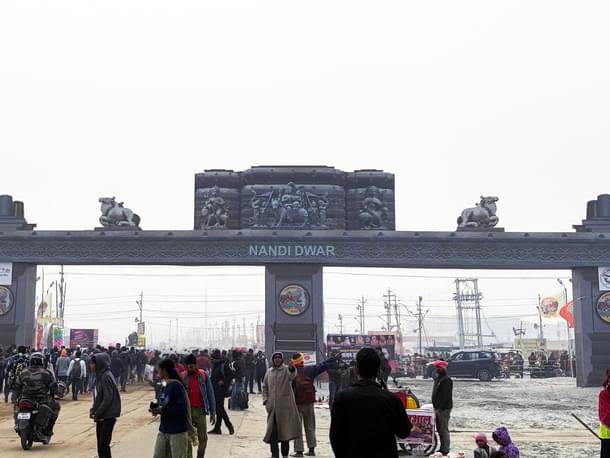
Handrails have been installed along the pathways for additional support to pilgrims, and barricading during larger gatherings to control the circulation.
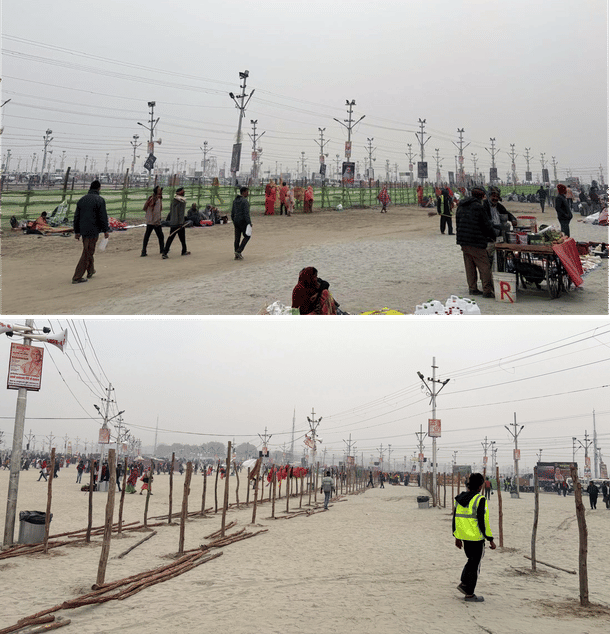
Sangam Ghat and the Holy Snan
Further along from Nandi Dwar, pilgrims arrive at the Triveni Sangam ghat. The entire route on foot until the snan ghat takes nearly 55 minutes.
The Yamuna river is visible ahead, and on the left, the sacred Ganga.
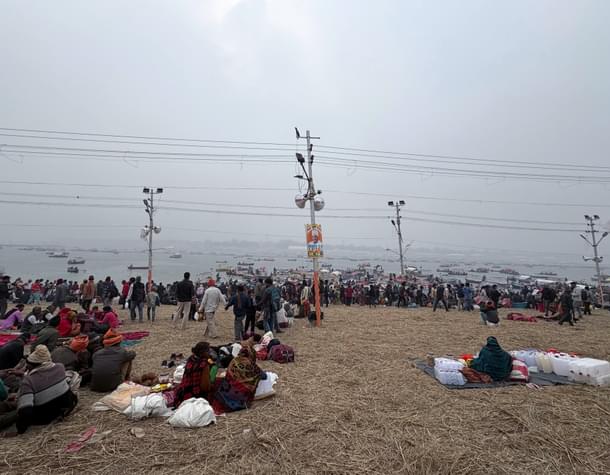
As the pilgrims approach the Sangam ghat, the first view they have is of the confluence of the two rivers.
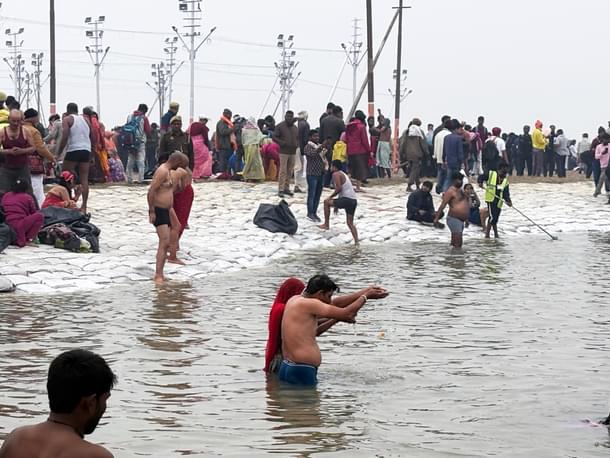

Changing rooms are stationed around every 200 metres (m). Several vendors and small shops are also at the ghat.
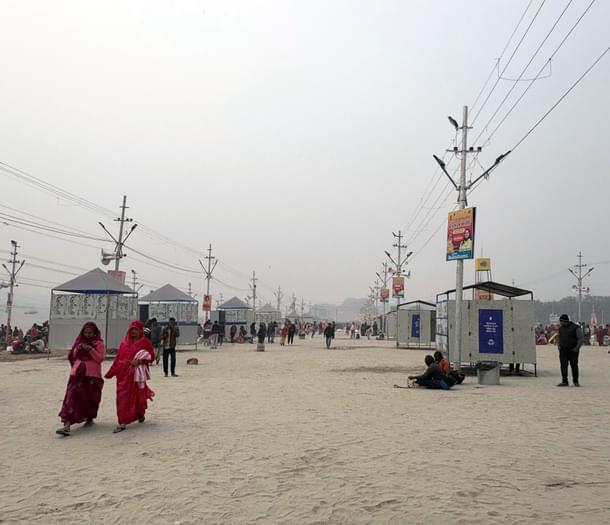
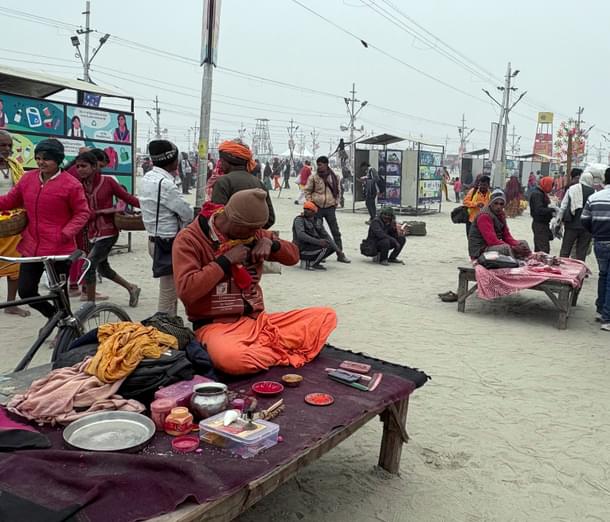
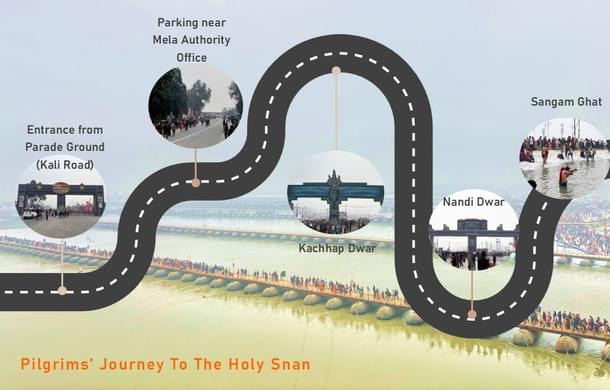
After the Snan
After the sacred snan at the ghat, pilgrims choose to relax, perform pooja, sing bhajans, participate in aartis, and take boat rides. Many pilgrims proceed to visit the akharas and ashrams located along the Ganga.
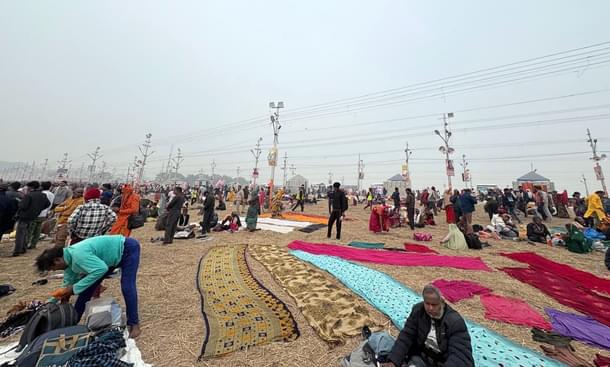
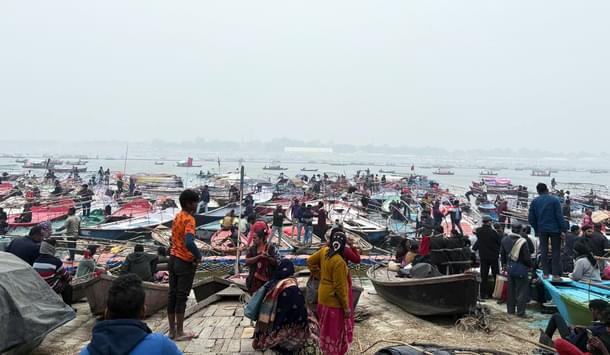
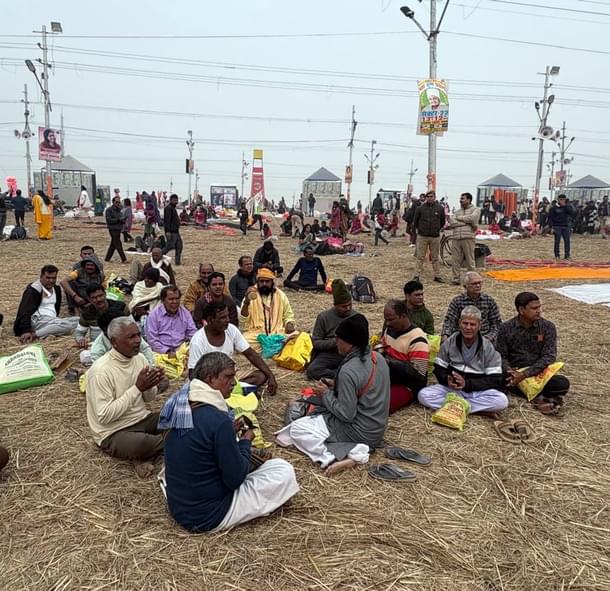
Multiple one-way pontoon bridges have been set up. These bridges are for pilgrims who have completed the holy dip and wish to visit the akharas. The saints from the akharas can use these bridges to reach the Sangam ghat.

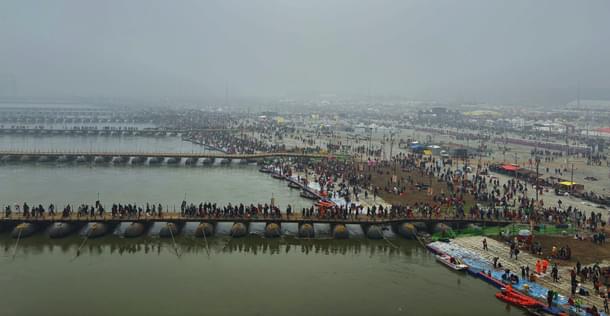
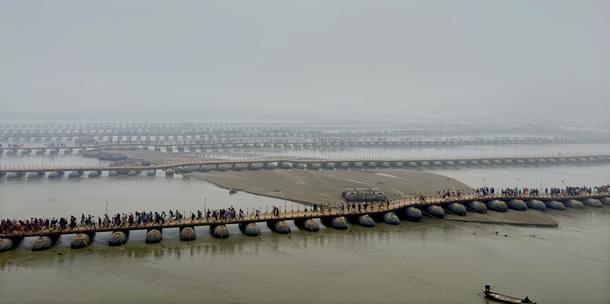
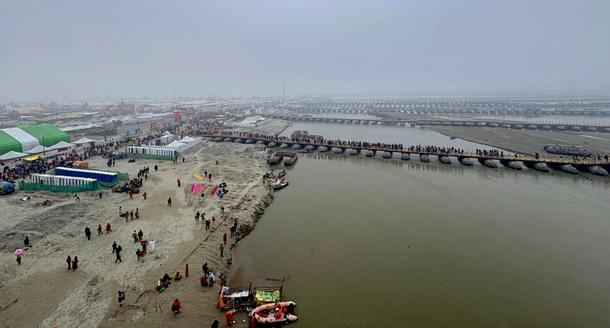
Akharas are monastic institutions or sects that bring together sadhus (ascetics) who follow specific spiritual traditions and practices.
A key aspect of the Maha Kumbh is the active participation of 13 recognised akharas, each representing different sects of Sanatana Dharma.
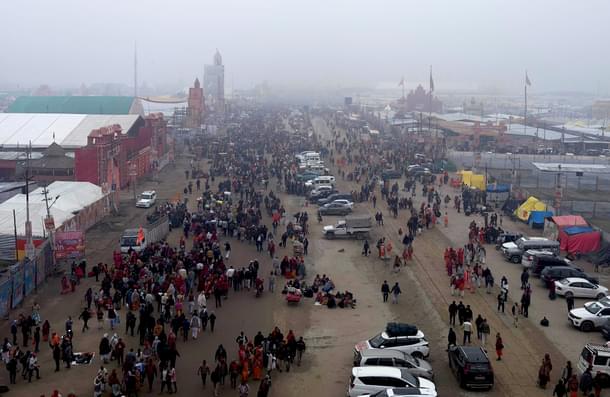
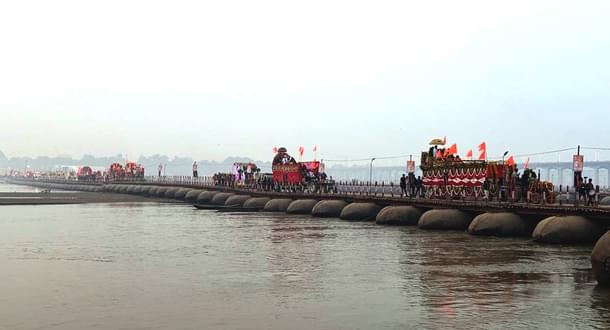
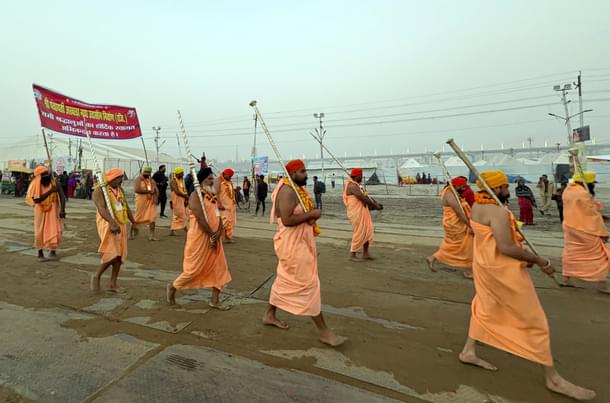
In each sector, signboards provide the the names of different margas (paths) and sectors along with the directions.
With the tents and ashrams already marked out, the mela authorities are adding micro-level direction boards within the sectors to further guide pilgrims to specific akharas and ashrams.
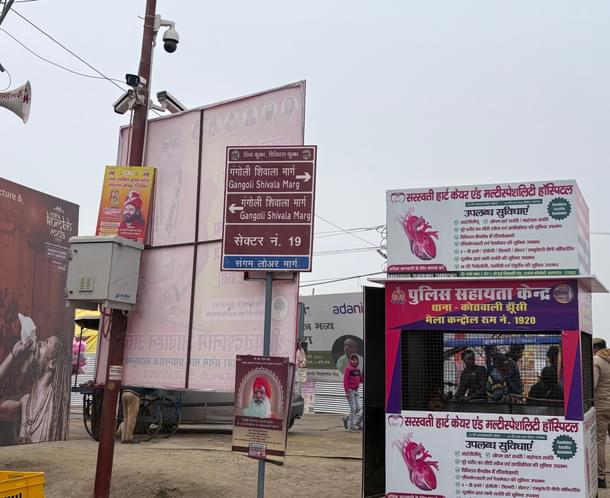
Inside the Akharas
The akharas have multiple hutments and facilities to accommodate the saints and sadhus associated with various sects. In addition, many pilgrims find a place to stay, eat, and spend time with their gurus within these akharas and ashrams.
In these spaces, most saints remain deeply engaged in their daily rituals — reading of sacred texts, preparing the fire pits for yajna, and attending to devotees who visit them.
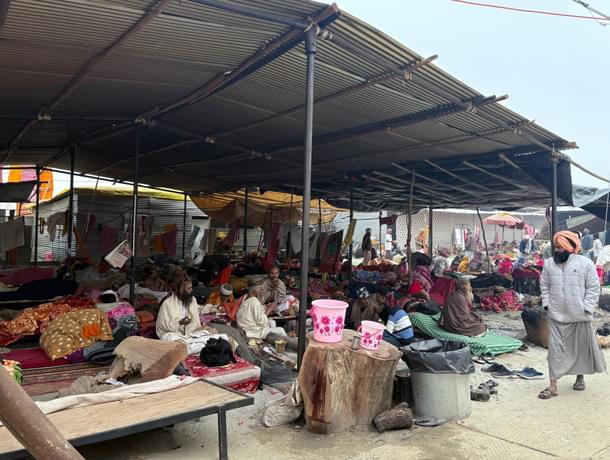
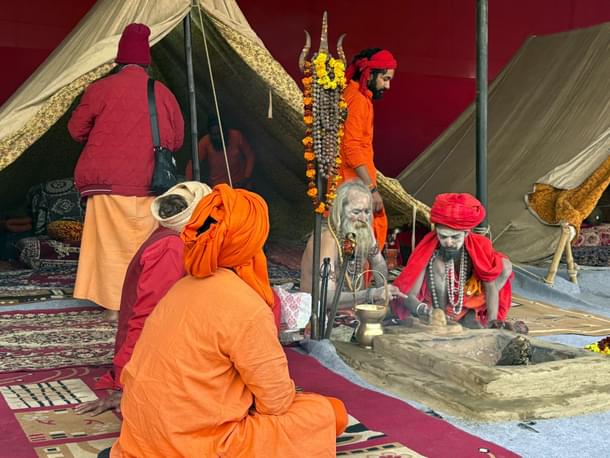
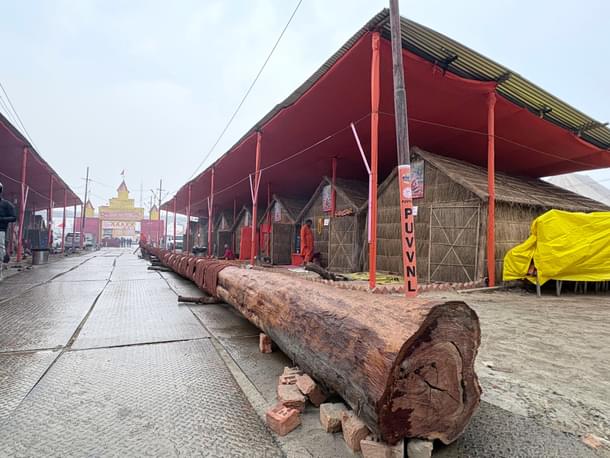
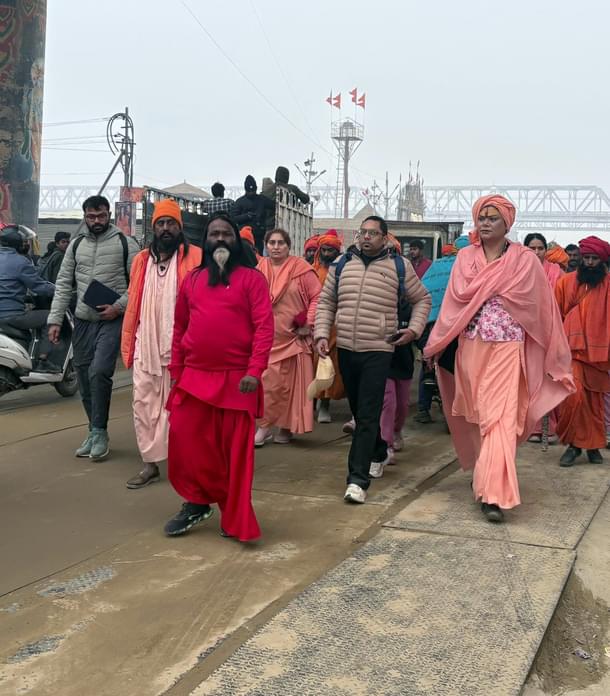
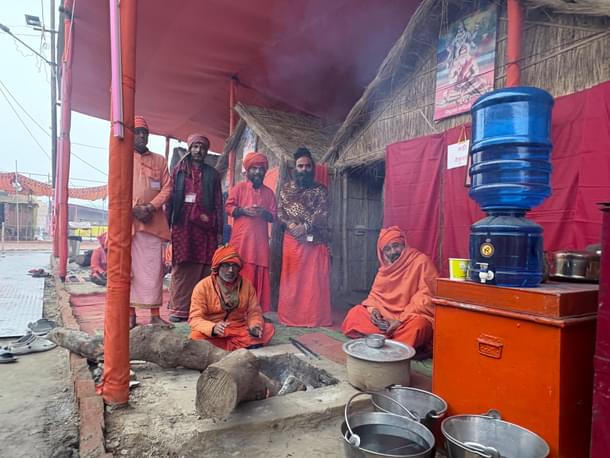
In nearly all akharas and ashrams, food is provided for lakhs of devotees. Within the camps of saints, as well as organisations, large kitchens are set up with thousands of volunteers to ensure every pilgrim in need is fed.
